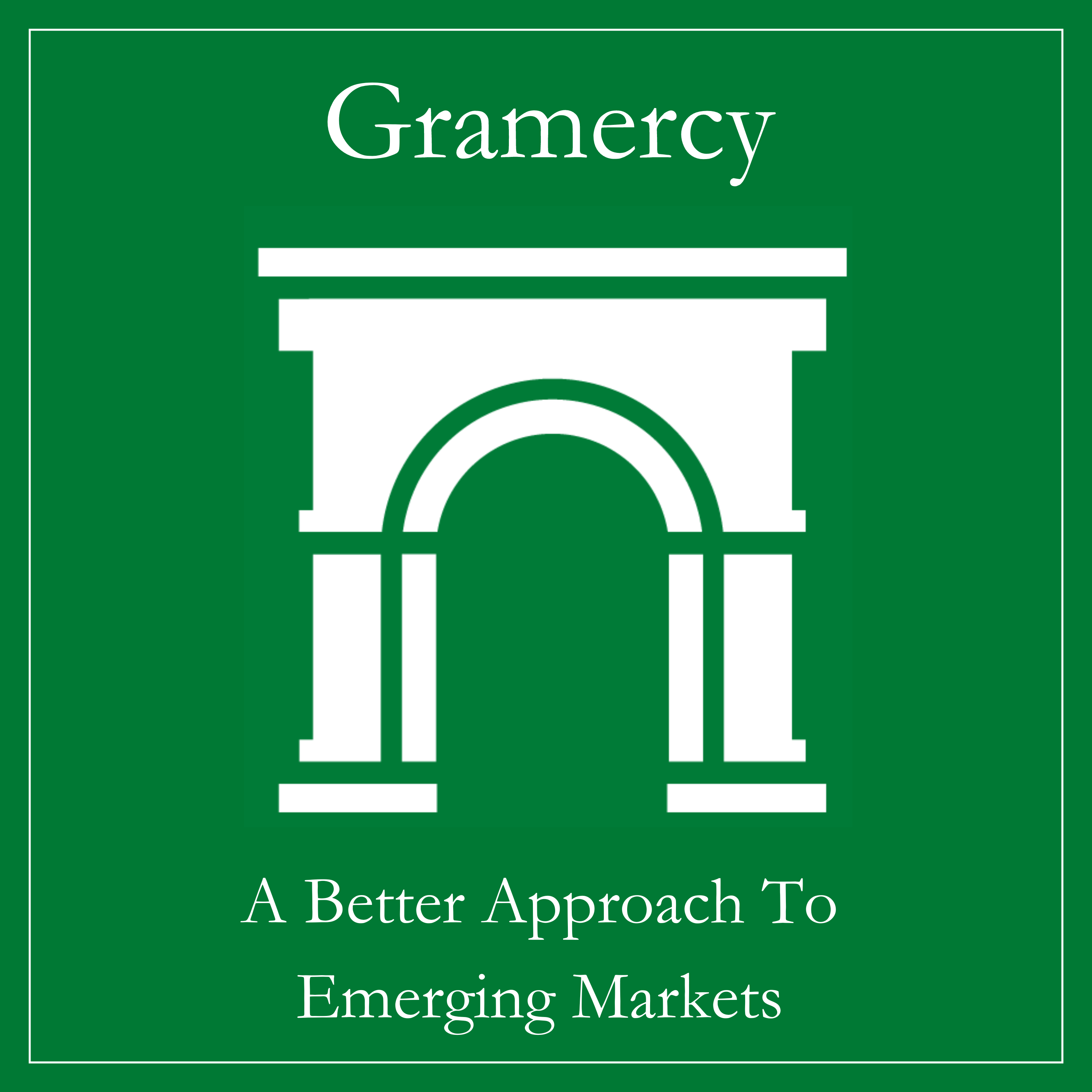Contents
Market Overview
Macro Review
The Bank of Japan eventually blinked. By Wednesday, the commentary from the BoJ Deputy Governor was that they would not hike interest rates in “unstable” markets. This did not entirely fix the issue, but equities did rally and the Nikkei recovered from a 20% drawdown on Monday from July 11. The week began with a question mark over the yen carry trade, the necessity of an emergency Fed rate cut and a debate around a Sahm recession, which was seemingly shorter than the pandemic-induced recession. Regardless, the market is pricing in 210bps of cuts by December 2025 with a terminal rate of 3.2% and 86bps of interest rate cuts in 2024. Expectations of rate cuts this year declined from 138bps at the intraday peak on Monday, but a 50bps cut in September remains the base case. Goldman Sachs capitalized on the peak bearishness early in the week to increase the probability of a recession from 15% to 25%, just as JPMorgan raised their probability from 25% to 35%. In any event, the market narrowly recovered and rallied after initial jobless claims fell slightly short of expectations. In response, the S&P 500 posted its largest daily gain since November 2022 on Thursday, and the VIX is still a poor proxy of risk sentiment given technical noise in out-of-money options. Focus is shifting back to Middle Eastern tensions, just as European gas prices soared to the highest level this year following a report that Ukrainian troops seized a key gas-transit point of Sudzha (Russia). The impact on crude oil almost took brent oil back above $80/bbl. Across EM, El Salvador made progress with the IMF and triggered a large rally in bond prices. Turkey’s inflation declined substantially to 61% due to base effects, which was a similar observation in Egyptian inflation. The Reserve Bank of India kept interest rates unchanged, but Mexico cut by 25bps in a 3-2 split just after judicial reforms were mooted and explained the MXN strength. Finally, Ethiopia was rumored to be considering a 20% principal haircut, which is more aggressive than the December restructuring proposals.
EM Credit Update
Emerging market sovereign credit (cash bonds) ended the week down 0.4%, with credit spreads 9bps tighter. U.S. Treasury volatility was the theme of the week with yields up 13-18bps over a 5-day period, in spite of the Monday flash crash on JPY de-grossing. Sovereign outperformers were El Salvador, Argentina and Paraguay, while Sri Lanka, Ethiopia and Bolivia underperformed.
The Week Ahead
The U.S. inflation report is another key release for the Federal Reserve before Jackson Hole. Equally, Trump’s comments on the Federal Reserve and the President having more influence over monetary policy is a risk factor and may be expanded in his interview with Elon Musk on Monday. In Europe, UK jobs, inflation and GDP reports are due. China’s PBoC are set to keep the one-year MLF rate unchanged, after an unscheduled surprise cut in July. Elsewhere, Japanese GDP, Indian inflation and New Zealand’s interest rate decision stand out. Lesser focus will be on Argentina’s inflation and Colombia 2Q GDP release. EM interest rate decisions are limited to the Philippines (6.5%) after China (2.3%).
Highlights from emerging markets discussed below: El Salvador and IMF make progress toward a Fund-supported program and Banxico cut policy rate 25bps amid volatile week for the peso.
Fixed Income
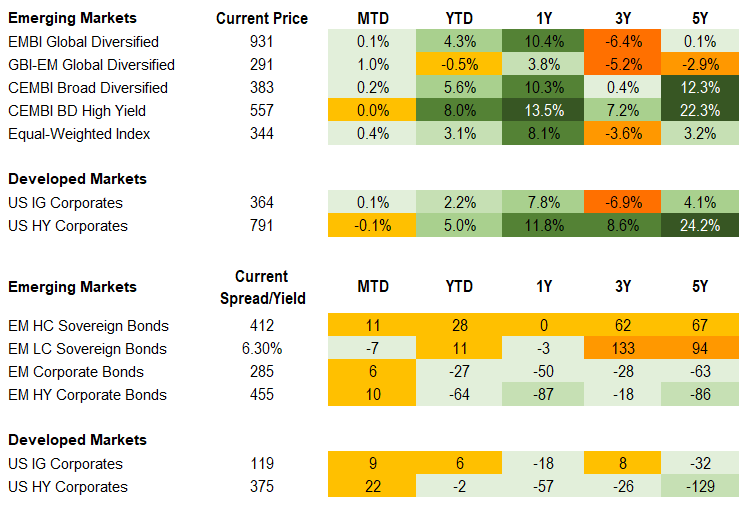
Equities
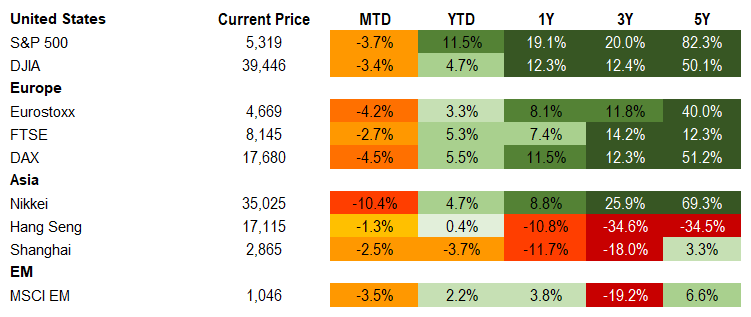
Commodities

Source for data tables: Bloomberg, JPMorgan, Gramercy. EM Fixed Income is represented by the following JPMorgan Indicies: EMBI Global, GBI-EM Global Diversified, CEMBI Broad Diversified and CEMBI Broad High Yield. DM Fixed Income is represented by the JPMorgan JULI Total Return Index and Domestic High Yield Index. Fixed Income, Equity and Commodity data is as of August 9, 2024 (early-morning).
Emerging Markets Weekly Highlights
El Salvador and IMF make progress toward a Fund-supported program
Event: The International Monetary Fund (IMF) issued a statement this week following discussions over the past months with the Salvadoran authorities. The IMF stated that progress has been made in the negotiations toward a Fund-supported program focused on policies to strengthen public finances, boost bank reserve buffers, improve governance and transparency, and mitigate the risks from Bitcoin.
Gramercy Commentary: This week’s statement was the first clear indication of progress and issued directly by the IMF after many months of conflicting signals and general pessimism regarding the probability of a deal. The pessimism was mainly driven by the Fund’s significant concerns about the adoption of Bitcoin as legal tender in El Salvador alongside the U.S. dollar since September 2021. Markets welcomed the declaration of progress being made, which propelled the sovereign bond complex to the largest gains across EM this week. We expect the rally to continue with the expectation that an IMF program is becoming more probable and as El Salvador’s sovereign credit spreads remain wider than fundamentally justified. However, we also note that risks to the constructive IMF scenario are not trivial and warrant close monitoring. Bitcoin’s legal tender status is the main issue that needs to be resolved as the IMF has warned that additional discussions remain necessary to mitigate “potential fiscal and financial stability risks from the Bitcoin project”.
Banxico cut policy rate 25bps amid volatile week for the peso
Event: The Central Bank lowered its policy rate to 10.75% from 11% in a 3-2 decision. This followed a reversal in headline inflation to the upside but continued declines in core inflation and softer economic activity. Banxico’s statement indicated that it expects drivers of the recent increase in non-core inflation to dissipate over the next quarters while risks to growth remain biased to the downside and inflation to the upside.
Gramercy Commentary: The decision was in line with initial market consensus but had become less certain after the depreciation of the peso earlier in the week. The split decision and mixed statement leave the door open for further adjustments, helping to limit peso weakness in the aftermath of the adjustment.
Emerging Markets Technicals
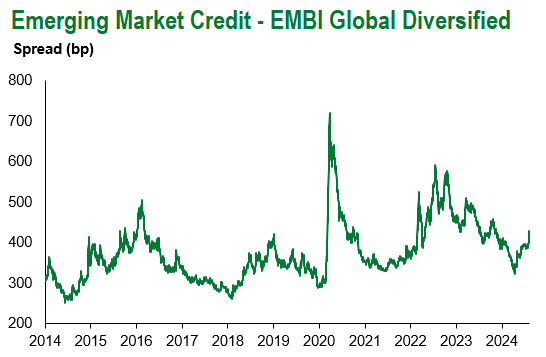
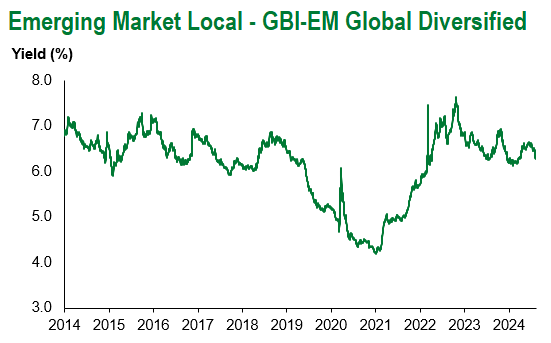
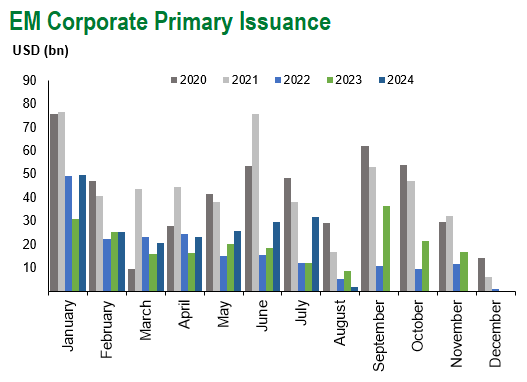
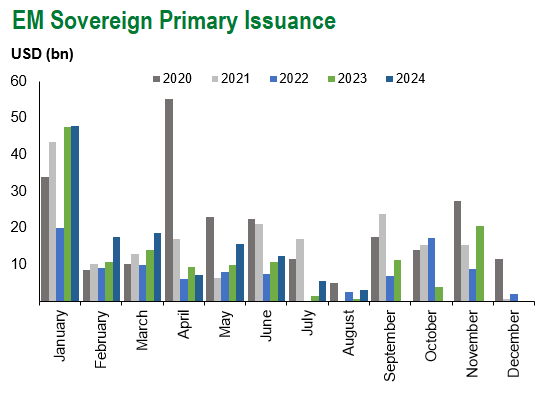
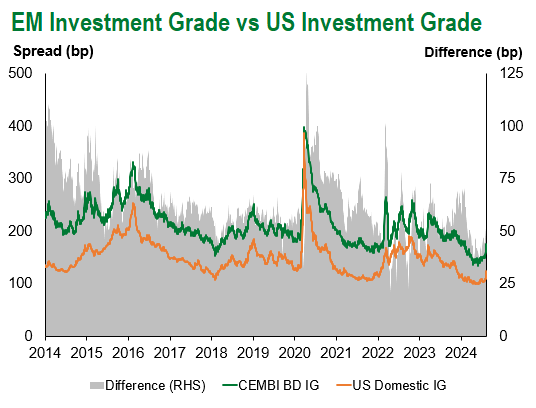
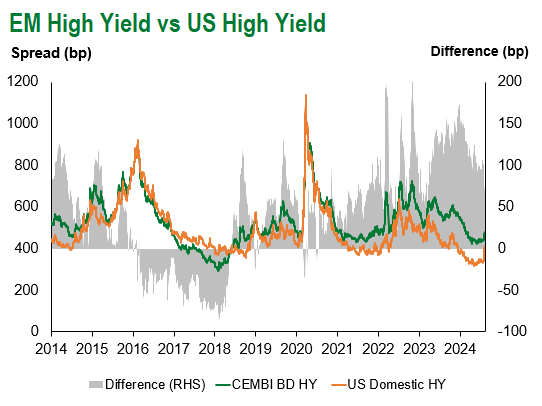
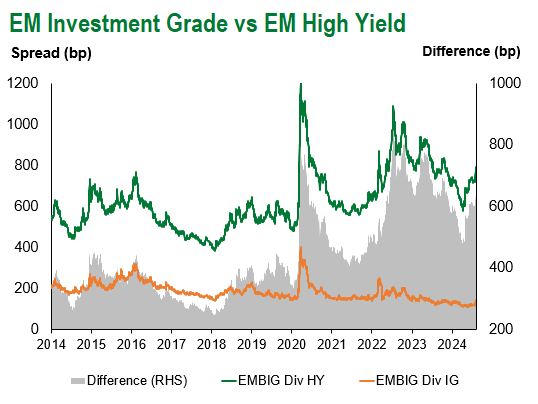
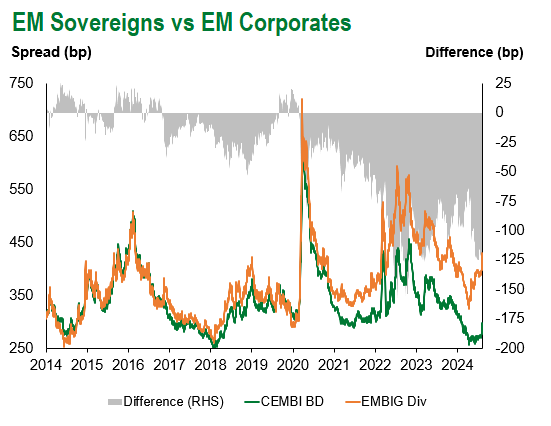
Emerging Markets Flows
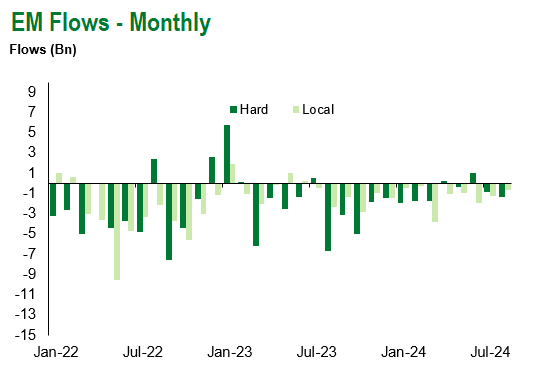
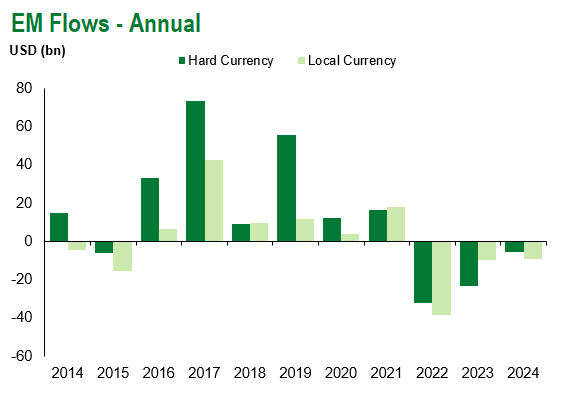
Source for graphs: Bloomberg, JPMorgan, Gramercy. As of August 9, 2024.
For questions, please contact:
Kathryn Exum, CFA ESG, Director, Co-Head of Sovereign Research, [email protected]
Petar Atanasov, Director, Co-Head of Sovereign Research, [email protected]
James Barry, Director, Deputy Portfolio Manager, [email protected]
This document is for informational purposes only. The information presented is not intended to be relied upon as a forecast, research or investment advice, and is not a recommendation, offer or solicitation to buy or sell any securities or to adopt any investment strategy. Gramercy may have current investment positions in the securities or sovereigns mentioned above. The information and opinions contained in this paper are as of the date of initial publication, derived from proprietary and nonproprietary sources deemed by Gramercy to be reliable, are not necessarily all-inclusive and are not guaranteed as to accuracy. This paper may contain “forward-looking” information that is not purely historical in nature. Such information may include, among other things, projections and forecasts. There is no guarantee that any forecasts made will come to pass. Reliance upon information in this paper is at the sole discretion of the reader. You should not rely on this presentation as the basis upon which to make an investment decision. Investment involves risk. There can be no assurance that investment objectives will be achieved. Investors must be prepared to bear the risk of a total loss of their investment. These risks are often heightened for investments in emerging/developing markets or smaller capital markets. International investing involves risks, including risks related to foreign currency, limited liquidity, less government regulation, and the possibility of substantial volatility due to adverse political, economic or other developments. References to any indices are for informational and general comparative purposes only. The performance data of various indices mentioned in this update are updated and released on a periodic basis before finalization. The performance data of various indices presented herein was current as of the date of the presentation. Please refer to data returns of the separate indices if you desire additional or updated information. Indices are unmanaged, and their performance results do not reflect the impact of fees, expenses, or taxes that may be incurred through an investment with Gramercy. Returns for indices assume dividend reinvestment. An investment cannot be made directly in an index. Accordingly, comparing results shown to those of such indices may be of limited use. The information provided herein is neither tax nor legal advice. Investors should speak to their tax professional for specific information regarding their tax situation.
